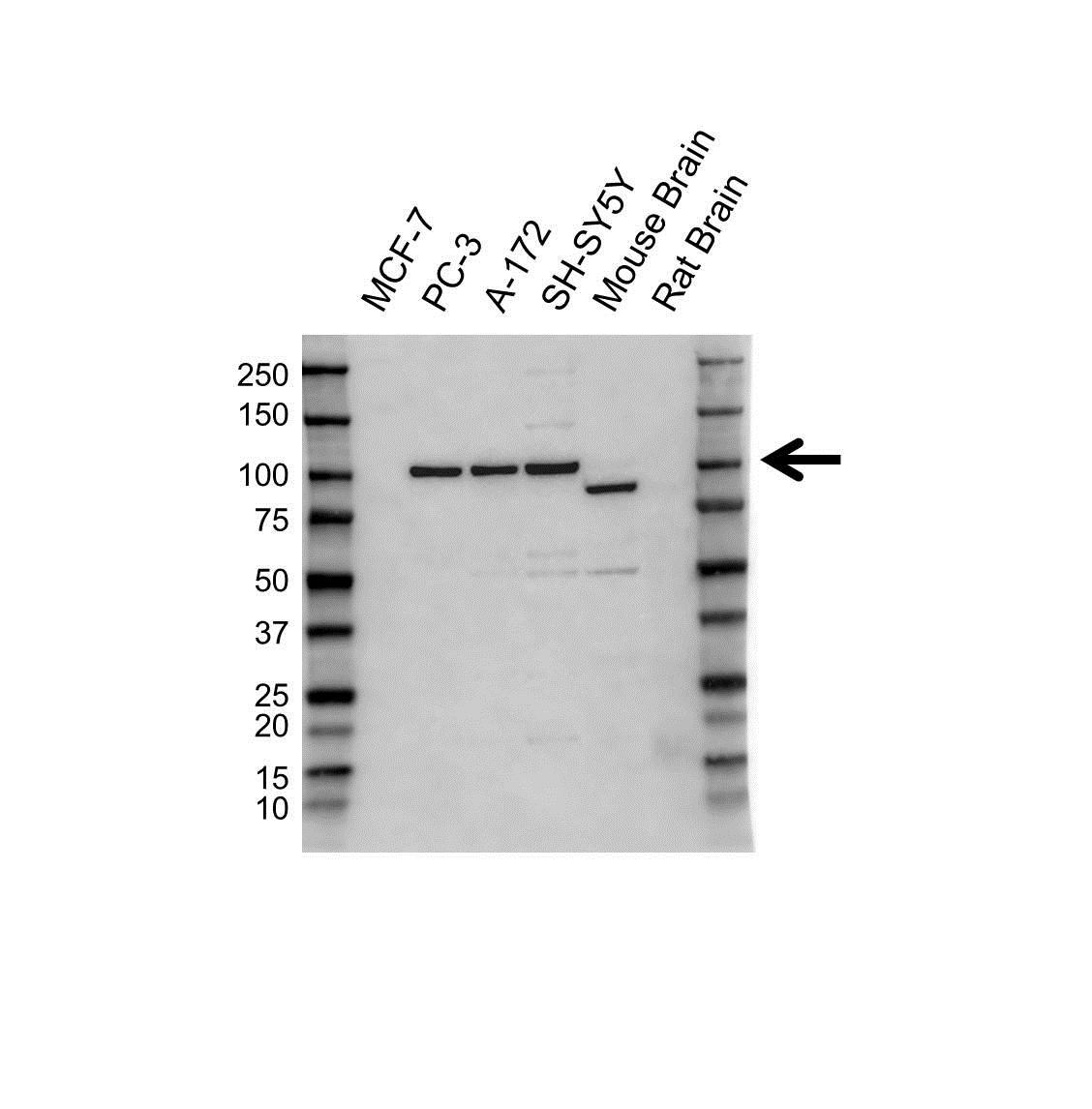ATAXIN-1 antibody

Rabbit anti ATAXIN-1
- Product Type
- PrecisionAb Polyclonal
- Isotype
- Polyclonal IgG
- Format
- Purified
- Specificity
- ATAXIN-1
- Target Species
- Human
- Western Blotting
- Anti ataxin-1 antibody recognizes a band of approximately 105 kDa in A-172 cell lysates
- Product Form
- Purified IgG - liquid
- Preparation
- Rabbit polyclonal antibody purified by affinity chromatography on immunogen
- Buffer Solution
- Phosphate buffered saline
- Preservative Stabilisers
- 0.09% Sodium Azide
<50% Glycerol - Immunogen
- Recombinant protein of human ataxin-1
- Regulatory
- For research purposes only
- Guarantee
- 12 months from date of despatch
- Acknowledgements
- PrecisionAb is a trademark of Bio-Rad Laboratories
| Application Name | Verified | Min Dilution | Max Dilution |
|---|---|---|---|
| Western Blotting | 1/1000 |
The PrecisionAb label is reserved for antibodies that meet the defined performance criteria within Bio-Rad's ongoing antibody validation programme. Click here to learn how we validate our PrecisionAb range. Where this product has not been tested for use in a particular technique this does not necessarily exclude its use in such procedures. Further optimization may be required dependent on sample type.
| Description | Product Code | Applications | Pack Size | List Price | Your Price | Quantity | |
|---|---|---|---|---|---|---|---|
| Goat anti Rabbit IgG (H/L):HRP | STAR208P | WB | 2 ml |
|
Log in | ||
| List Price | Your Price | ||||||
|
|
Log in | ||||||
| Description | Goat anti Rabbit IgG (H/L):HRP | ||||||
- UniProt
- P54253
- Entrez Gene
- ATXN1
- GO Terms
- GO:0005515 protein binding
- GO:0005737 cytoplasm
- GO:0005654 nucleoplasm
- GO:0006396 RNA processing
- GO:0008022 protein C-terminus binding
- GO:0008219 cell death
- GO:0008266 poly(U) RNA binding
- GO:0042802 identical protein binding
- GO:0016363 nuclear matrix
- View More GO Terms
- GO:0016564 transcription repressor activity
- GO:0034046 poly(G) RNA binding
- GO:0042405 nuclear inclusion body
- GO:0043621 protein self-association
- GO:0051168 nuclear export
VPA00865
If you cannot find the batch/lot you are looking for please contact our technical support team for assistance.
Please Note: All Products are "FOR RESEARCH PURPOSES ONLY"
View all Anti-Human ProductsAlways be the first to know.
When we launch new products and resources to help you achieve more in the lab.
Yes, sign me up
